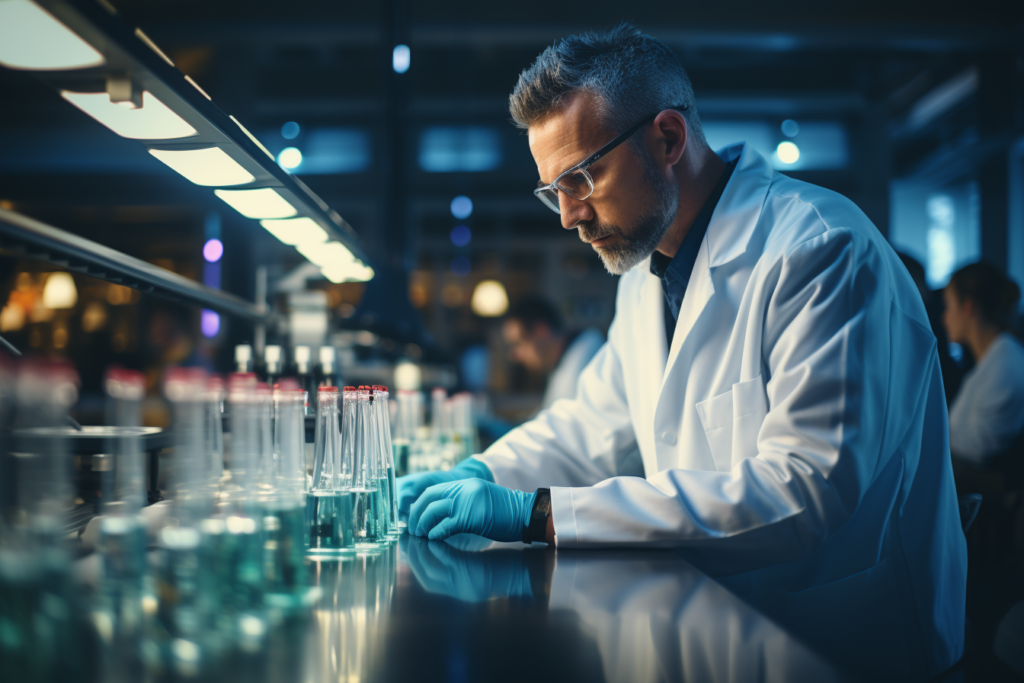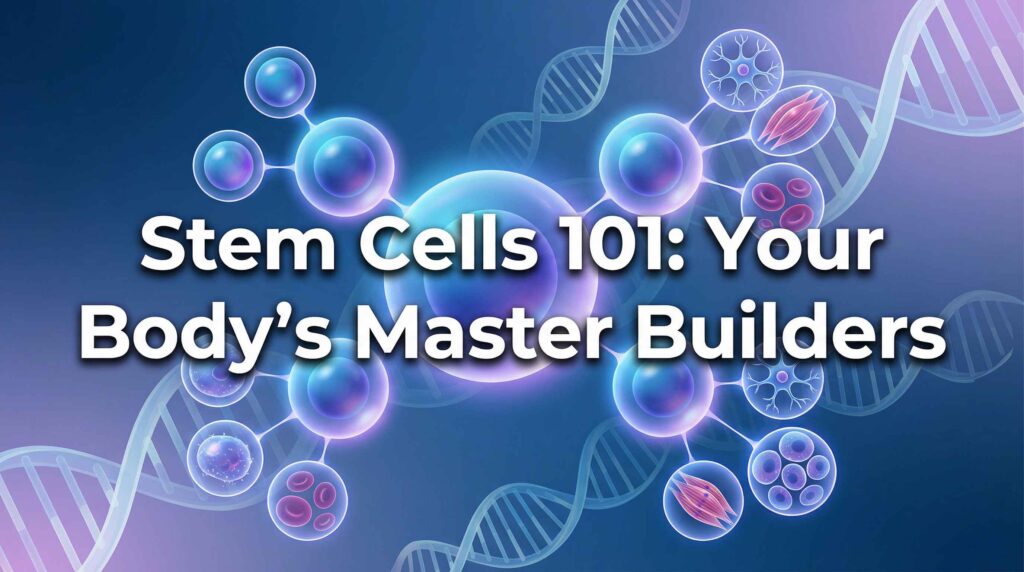Welcome, dear readers! Today, we’re embarking on a journey into the microscopic world of cells, specifically stem cells. These aren’t just any ordinary cells; they’re like the superheroes of the cellular world. Imagine a cell that can morph into any cell type in the body, much like a superhero changing disguises. That’s the power of a stem cell!
Now, within the realm of stem cells, there’s a special kind of stem cell that has been causing quite a stir in the scientific community. These are the induced pluripotent stem cells (iPSCs). Think of them as the undercover agents of the stem cell world. They start life as regular cells, known as somatic cells, but with a bit of scientific magic, they can be transformed back into stem cells. It’s like turning a regular citizen into a superhero!
The discovery and development of iPSCs have opened up a whole new world of possibilities in the field of regenerative medicine. From studying diseases in a petri dish to testing new drugs, and even potentially repairing damaged tissues in the body, the applications of iPSCs are vast and exciting.
So, buckle up as we delve into the world of iPSCs, exploring their creation, their potential applications, and the challenges we face in harnessing their full potential. Whether you’re a seasoned scientist, a curious student, or just someone interested in the latest developments in medical science, we hope this journey will be as fascinating for you as it is for us.
Understanding Stem Cells
If we were to compare the human body to a city, stem cells would be the construction workers. They have the unique ability to develop into any cell type, just like a construction worker who can take on any job, from laying bricks to installing windows.
There are three main types of stem cells: embryonic stem cells, adult stem cells, and induced pluripotent stem cells. Each type has its own unique characteristics and potential applications.
Embryonic stem cells are like the fresh graduates of the cell world. They’re derived from human embryos and have the potential to become any cell type in the body. However, their use has been a subject of ethical debates, which has led scientists to look for alternatives.
Adult stem cells, on the other hand, are like the experienced workers. They’re found in various tissues in our bodies, such as the bone marrow or blood cells, and can regenerate into the specific cell types of the tissue they reside in. However, their ability to transform is more limited compared to embryonic stem cells.
This is where induced pluripotent stem cells (iPSCs) come into the picture. Imagine taking an ordinary citizen (a somatic cell) and giving them a superhero makeover (reprogramming them into a stem cell). That’s essentially what we do to create iPSCs. They’re like the undercover superheroes of the stem cell world, offering the versatility of embryonic stem cells without the associated ethical concerns.
The unique properties of stem cells, especially their ability to self-renew and differentiate into various cell types, make them invaluable in the field of regenerative medicine. But how exactly do we turn a somatic cell into an iPSC? Stay tuned as we uncover this in the next section!
The Discovery and Development of iPSCs

Imagine you’re a scientist, and you’ve just discovered a way to turn back time for cells, a bit like a cellular time machine. That’s exactly what Shinya Yamanaka and his team did back in 2006. They found a way to take mature somatic cells and rewind their biological clocks, turning them back into stem cells. This was the birth of induced pluripotent stem cells (iPSCs).
The process of creating iPSCs is a bit like baking a cake, but instead of flour and eggs, we use genes. Specifically, Yamanaka’s team introduced four specific genes, known as transcription factors, into the somatic cells. These genes essentially reprogrammed the cells, turning them back into stem cells. It’s like adding a secret ingredient to a cake that transforms it into a completely different dessert!
These transcription factors – Oct3/4, Sox2, c-Myc, and Klf4 – are like the master switches of a cell. When turned on, they can change the cell’s identity. In the case of iPSCs, they reset the cell to its most primitive state, making it pluripotent again. Hence, the name “induced pluripotent stem cells.”
The discovery of iPSCs was a game-changer. It was like finding a new recipe that allows us to bake any kind of cake we want, from a simple vanilla sponge to a fancy chocolate mousse, using the same basic ingredients. In the next section, we’ll explore why iPSCs are so special and how they’re helping us push the boundaries of medical science.
The Advantages of iPSCs

Imagine you’ve found a way to create gold from lead. That’s the kind of excitement the discovery of induced pluripotent stem cells (iPSCs) brought to the scientific community. The ability to reprogram somatic cells into iPSCs has several significant advantages.
Firstly, iPSCs help us sidestep the ethical issues associated with embryonic stem cells. It’s like finding a way to make gold without having to mine it, thus avoiding the environmental damage associated with mining. By using somatic cells, which can be obtained from a simple skin biopsy, we can create pluripotent stem cells without having to use embryos.
Secondly, iPSCs open the door to personalized medicine. Imagine if every patient could have their own custom-made stem cells. These cells could be used to study the patient’s disease, test potential treatments, and even potentially repair damaged tissues. It’s like having a tailor-made suit, but instead of a suit, it’s a cell line that perfectly matches the patient’s body.
Finally, iPSCs provide a powerful tool for studying diseases and testing drugs. By creating iPSCs from patients with specific diseases, we can generate any cell type affected by the disease. It’s like being able to recreate a crime scene to understand exactly what went wrong. This can help us understand the disease better and find more effective treatments.
In the next section, we’ll delve deeper into these applications of iPSCs and explore how they’re revolutionizing medicine.
Applications of iPSCs
Imagine having a magic wand that could transform a pumpkin into a carriage, just like in Cinderella’s story. Induced pluripotent stem cells (iPSCs) are a bit like that magic wand, but instead of pumpkins and carriages, they can transform somatic cells into any cell type in the body. This transformative ability opens up a world of possibilities in medicine.
Regenerative Medicine and Tissue Engineering:
iPSCs can be coaxed to develop into any cell type, which can then be used to repair or replace damaged tissues and organs. It’s like having a spare parts store for the human body. For example, iPSCs could be used to generate insulin-producing cells for people with diabetes, or neurons for people with Parkinson’s disease.
Disease Modeling:
iPSCs derived from patients with specific diseases can be used to recreate the disease in a petri dish. It’s like creating a movie set where we can replay the scene of the crime to understand how the disease develops and progresses. This can help us find new ways to prevent and treat these diseases.
Drug Discovery and Testing:
iPSC-derived cells can be used to test the safety and effectiveness of new drugs. It’s like having a test track where we can safely test a new car before it hits the road. This can speed up the process of drug development and make it safer and more efficient.
The potential applications of iPSCs are vast and exciting, but like any new technology, there are challenges to overcome. In the next section, we’ll discuss some of these challenges and the future directions of iPSC research.
Challenges and Future Directions
As exciting as the world of induced pluripotent stem cells (iPSCs) is, it’s not without its challenges. It’s a bit like setting sail on a new voyage of discovery. The destination is enticing, but the journey is fraught with unknowns and potential dangers.
One of the main challenges is ensuring the safety of iPSCs for clinical applications. When we reprogram somatic cells into iPSCs, we’re essentially resetting their biological clocks. However, this process can sometimes lead to unwanted changes, like mutations that could potentially cause cancer. It’s like refurbishing an old car; you have to make sure you’re not introducing new problems while fixing the old ones.
Another challenge is the efficiency of reprogramming. Currently, only a small percentage of somatic cells successfully turn into iPSCs. It’s like trying to find a needle in a haystack. We need to find ways to increase this efficiency to make iPSCs a viable option for large-scale applications.
Despite these challenges, the future of iPSC research is bright. Scientists are continually finding new ways to improve the reprogramming process and ensure the safety of iPSCs. With every passing day, we’re getting closer to harnessing the full potential of these amazing cells.
FAQ
Q: What are induced pluripotent stem cells (iPSCs)?
A: Induced pluripotent stem cells (iPSCs) are a type of stem cell that are generated by reprogramming somatic cells, such as skin cells, into a pluripotent state. This means that iPSCs have the potential to differentiate into any type of cell in the body.
Q: How are induced pluripotent stem cells created?
A: Induced pluripotent stem cells are created through a process called cellular reprogramming. This involves introducing specific genes into somatic cells, which then activate the expression of pluripotency genes, transforming the somatic cells into iPSCs.
Q: What are the potential applications of induced pluripotent stem cells?
A: Induced pluripotent stem cells have a wide range of potential applications in regenerative medicine, disease modeling, drug discovery, and personalized medicine. They can be used to generate patient-specific cells for transplantation, study the development of diseases in a laboratory setting, and test the efficacy and safety of new drugs.
Q: Can induced pluripotent stem cells be used in clinical applications?
A: Yes, induced pluripotent stem cells hold great promise for use in clinical applications. They have the potential to provide a renewable source of cells for transplantation, allowing for the treatment of various diseases and injuries. However, further research is needed to ensure their safety and efficacy before they can be widely used in clinical settings.
Q: What are the differences between induced pluripotent stem cells and human embryonic stem cells?
A: Induced pluripotent stem cells are generated by reprogramming somatic cells, while human embryonic stem cells are derived from embryos. Both cell types have similar properties and capabilities, but induced pluripotent stem cells offer the advantages of being patient-specific and avoiding ethical concerns associated with the use of human embryos.
Q: How are induced pluripotent stem cells used in research?
A: Induced pluripotent stem cells are used in various research applications, including disease modeling, drug discovery, and understanding the mechanisms of cellular development and differentiation. They can be differentiated into specific cell types, such as neurons or cardiomyocytes, to study diseases and test the effects of drugs.
Q: What are the challenges of using induced pluripotent stem cells in research and clinical applications?
A: One of the main challenges of using induced pluripotent stem cells is ensuring their safety and stability. There is a risk of mutations and epigenetic changes occurring during the reprogramming process, which can affect the behavior and functionality of the iPSCs. Additionally, there is a need to develop standardized protocols for the generation and differentiation of iPSCs to ensure consistency and reproducibility.
Q: Can induced pluripotent stem cells be used to treat genetic diseases?
A: Yes, induced pluripotent stem cells hold great potential for treating genetic diseases. By reprogramming somatic cells from patients with genetic diseases into iPSCs, it is possible to generate disease-specific cell lines for studying the underlying mechanisms of the diseases and developing targeted therapies.
Q: Are induced pluripotent stem cells used in animal research?
A: Yes, induced pluripotent stem cells are used in animal research to study the development of diseases and test potential therapies. By introducing specific genetic mutations into iPSCs and then differentiating them into various cell types, researchers can gain insights into disease mechanisms and evaluate the effects of different interventions.
Q: What are stem cell-derived cardiomyocytes?
A: Stem cell-derived cardiomyocytes are heart muscle cells that are generated from pluripotent stem cells, including induced pluripotent stem cells. These cells have the potential to mimic the properties and functions of native heart muscle cells and are used in research and drug screening for cardiovascular diseases.
Conclusion
As we wrap up our journey into the world of induced pluripotent stem cells (iPSCs), it’s clear that we’re standing on the brink of a new era in medicine. iPSCs, with their ability to transform into any cell type, are like a master key that can unlock countless doors in our understanding and treatment of diseases.
From their discovery by Shinya Yamanaka and his team to their potential applications in regenerative medicine, disease modeling, and drug testing, iPSCs have revolutionized our approach to medical research. They’ve given us a way to sidestep the ethical issues associated with embryonic stem cells and opened the door to personalized medicine.
However, like any groundbreaking technology, iPSCs come with their own set of challenges. Ensuring their safety and improving the efficiency of reprogramming are hurdles we need to overcome. But with the pace of scientific progress, it’s only a matter of time before we find solutions to these challenges.
The story of iPSCs is a testament to the power of scientific curiosity and innovation. It’s a story that’s still being written, with new chapters being added every day. As we continue to explore the potential of these remarkable cells, who knows what exciting discoveries lie ahead?
Thank you for joining us on this journey. We hope it’s been as fascinating for you as it has been for us. Until next time, keep exploring!



